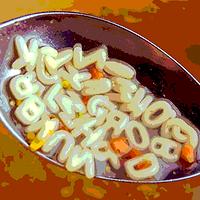HACCP vs. HARPC: A Comparison

Hazard Analysis and Critical Control Points (HACCP) and Hazard Analysis and Risk-Based Preventive Controls (HARPC) share more than just four letters. They’re both food safety standards based on prevention, but they do differ on execution. Their differences and similarities aren’t as important as the way they fit together for most food processors though. A HARPC plan shouldn’t be considered as a replacement but as a necessary upgrade to the conventional HACCP plan. Understanding how the systems fit together is the first step toward implementing both.
HARPC as an Upgrade to HACCP
HACCP is already widely used due to requirements from retailers, auditing standards and inspectors, although the U.S. Department of Agriculture (USDA) and the U.S. Food and Drug Administration (FDA) only mandate it for meat, seafood and juice products. HACCP has been continually developed and updated. It requires a multi-disciplinary team for implementation and follows prescriptive steps.
HARPC covers food safety concerns beyond CCPs and is mandated by FDA for most facilities, with some exemptions. Instead of only looking at process steps where controls can be applied, HARPC relies on the applicable FDA regulations, standards and guidance documents to develop a preventive control plan.
How HACCP Works
HACCP is a globally recognized, risk-based preventative approach recommended by the Codex Alimentarius Commission (Food Code) and the National Advisory Committee on Microbiological Criteria for Foods. The primary goals are to prevent occurrences of the hazard, or eliminate or reduce the food safety hazard to acceptable or safe
levels.
HACCP plans are developed, implemented and maintained by a multi-disciplinary team.
Even though HACCP programs for food establishments may be voluntary (unless specified by regulations, industrial standards or customers), it does not absolve a facility from implementing Current Good Manufacturing Practices and other relevant prerequisite program requirements necessary to maintain the safety and legality of the food products. Auditors, inspectors, customers and other stakeholders may inspect the HACCP or food safety plan.
How HARPC Works
In brief, this preventive control system mandated by FDA’s Food Safety Modernization Act (FSMA) is to be implemented by all food establishments unless specifically exempted. Thus, it applies to food facilities in the U.S. that manufacture, process, pack, distribute, receive, hold or import food, and to those firms exporting foodstuffs to the U.S. Preventive controls are science-based and adequate to significantly minimize or prevent identified hazards “known or reasonably likely to occur” for each type of food subject to the relevant FDA regulation. The HARPC plan is developed, implemented and maintained by a team of “preventive controls-qualified individuals” as defined in FSMA, who have been trained or are sufficiently conversant with the FSMA Preventive Controls for Human Food rule and any other relevant FSMA regulations.
Recap of Key Differences between the Hazard Analysis Methods
The three conventional types of hazards that are addressed in HACCP plans—physical, chemical and biological—are accompanied by many more concerns in HARPC plans.
Radiation, natural toxins, pesticides, drug residues, decomposition, parasites, allergens, unapproved food or color additives, naturally occurring hazards and intentionally and unintentionally introduced hazards round out the list of HARPC-related hazards.
CCPs versus Preventive Controls
CCPs during process steps are central to HACCP. Each control point must include measurable critical limits—the temperature and length of time a sauce must be held at, for example, to be considered a kill step. The objective of each control step is to prevent, eliminate, or reduce food safety hazards to a safe and acceptable level. Food safety measures that aren’t specific to the process, such as personnel hygiene, are covered under Standard Operating Procedures.
HARPC focuses on preventive controls that are science- or risk-based, and should be adequate to “significantly minimize or prevent” known or foreseeable hazards for each type of food subject to the federal regulations.
To learn more about HACCP and HARPC, download the whitepaper “HACCP Planning for Food Safety” available at myrem.co/haccpplanning. You can also contact Remco Products’ knowledgeable customer service representatives at cs@remcoproducts.com with any questions you may have.
www.remcoproducts.com
Selected Resources
1. www.fda.gov/Food/GuidanceRegulation/FSMA/ucm334115.htm.
2. www.fao.org/docrep/012/a1552e/a1552e00.htm.
3. www.fda.gov/Food/GuidanceRegulation/FSMA/ucm247548.htm.
Looking for a reprint of this article?
From high-res PDFs to custom plaques, order your copy today!








